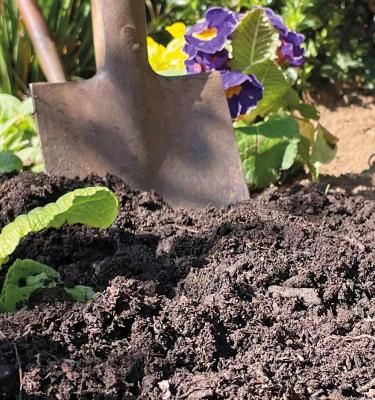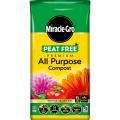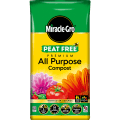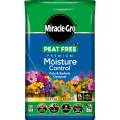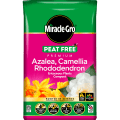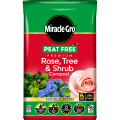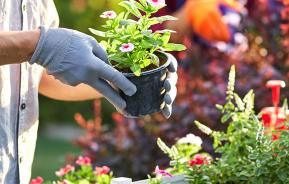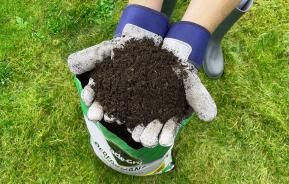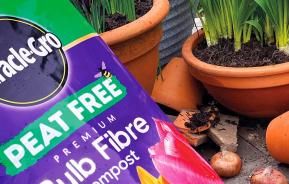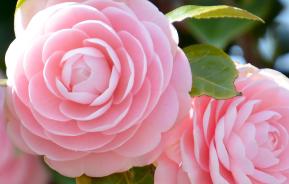What is peat?
Peat has been the major ingredient in bagged compost supplying millions of home gardeners since the 1960’s.
Peat is dark, crumbly, and very lightweight so light in bags means very easy to transport. Peat is inert which means that it is a great carrier for adding feed to as well as other ingredients and with a low pH, makes it easier to adjust for plants that need a bit more acidity such as rhododendrons, but perfect for most other plants.
Peat is made up of waterlogged, partially decomposed organic matter, which has been built up over tens of thousands of years, and because peat is formed in a watery bog where there is no oxygen it decomposes into carbon where it is locked away. This is known as a carbon sink.
Peat bogs make up only 3% of the worlds surface but store more than a quarter of the worlds carbon, more than the rainforests!
The habitats created by the peat bogs are rare, wetland ecosystems. These habitats are a vital, natural resource for a unique range of plants, animals and insects that have adapted to thrive there.

Why stop using peat?
For compost manufacturers to access the peat they have to extract it from the ground. To do this, the top living layer has to be scraped away and the bog completely drained. As soon as that happens the bog starts to emit carbon dioxide into the air, contributing heavily to climate change.
In addition, by stripping and draining the land, the biodiversity of that landscape is completely lost, meaning that the animals, plants, and insects that lived there will disappear.
Restoring a peat bog is not a simple solution. We know re-planting a forest can take a few years but as peat takes thousands of years to form, extracting just 1mm of peat, takes over a year for that 1mm to be re-formed. As some extractions go down to 12 meters, that means that the peatland lost by this extraction will not come back within a generation.
Gardens don’t need peat
Being a gardener, with whatever space you have, it could be a large garden a balcony or a few house plants, you are already doing something wonderful for nature. By having plants in your space, you are storing carbon, providing a habitat and food source for wildlife, and boosting your mental health as has been proven by many studies. Choosing peat free compost means that you are also caring for the wider environment.
The alternative
Going peat free is now easier than ever. In the past some peat free composts were not a viable alternative and many home gardeners didn’t want to make the switch. However, the amount of research, development and money that has gone into peat free ingredients, especially by companies such as Miracle-Gro who have spent the last 30 years perfecting their peat free composts, means that there are great peat free composts available to the home gardener that perform as well, if not better than peat based compost.
There will be a few changes that you may need to make with peat free including:
Watering – always check the plant needs watering as sometimes the texture of peat free compost may look like the plant is a bit dry on the top. Pop your finger down to the knuckle to feel for moisture and lift the pot up to feel the weight.
Feeding – some plants when planted in peat free compost use up nutrients more quickly, so be aware that if the leaves start to become yellowy or the plant is slower in growth then add a liquid or granular plant food. It’s always a good idea to feed hungry plants such as tomatoes and roses earlier than stated anyway.
Texture – A noticeable difference for those gardeners who have been using peat for years is the texture. As many peat free ingredients include wood-based products then the compost may appear ‘bitty’. These bits are not detrimental to plant growth, and many are carefully blended to help with drainage and air balance. Don’t remove the bits otherwise you are removing a key ingredient. If sowing small seeds, I always recommend using a specialist peat free seed sowing compost which is formulated to be finer.
Not all peat free composts are equal
It’s always worth checking on the brand that you are buying. Cheap, peat free composts will not have had the research and development and years of testing that more established composts have had. Invariable if a compost seems too cheap to be true you will probably get poor, plant performance.
Bagged compost is not just ‘dirt in a bag’ it’s composed of carefully blended ingredients that provide your garden with the building blocks to thrive so its always worth paying that little bit more and buy a trusted brand.
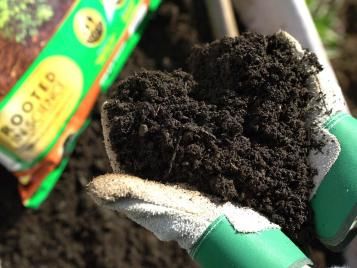
Make the switch!
The argument for going peat free is so clear. Extracting peat for use in gardening has caused irreparable damage to the landscape it belongs in and to the wildlife that lives there, and it has been proven that extraction contributes massively to climate change.
Great peat free alternatives are available everywhere so help nature, the environment, and future generations – go peat free now!
For more information on peat free products and guides, check out these articles:
